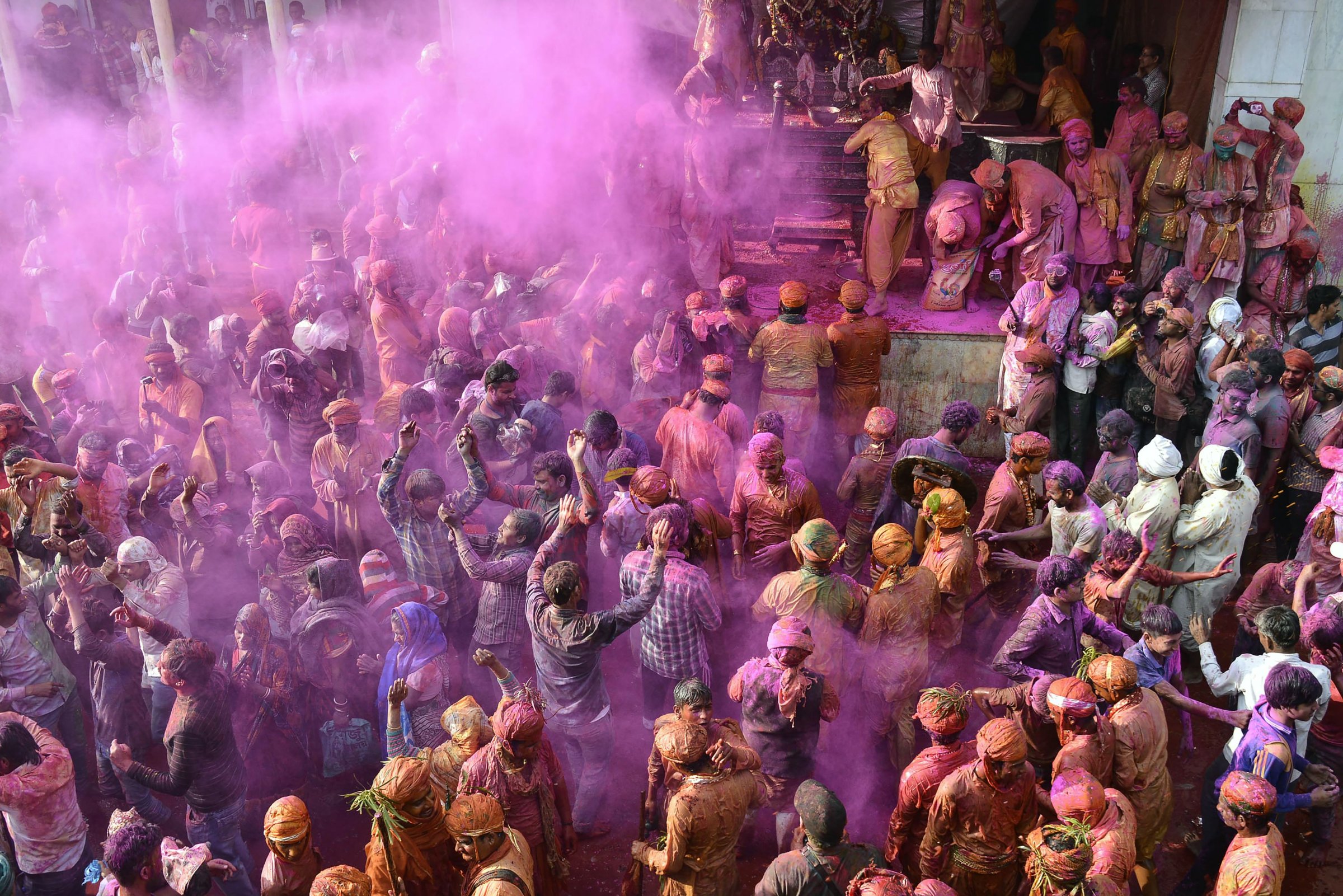
Every year millions of people in India, Nepal, and around the world celebrate the Hindu festival of Holi under clouds of technicolored powder.
The raucous Festival of Colors — a celebration of the vibrancy of spring, fertility, love and the triumph of good over evil — has inspired movies, music, and a plethora of whitewashed imitations. Here are some facts behind the ancient festival.
When is Holi?
Holi takes place on the last full moon of the Hindu lunar month Phalguna. This means it can fall anywhere between late February and late March on the Gregorian calendar — this year it’s March 13 and 14 — and coincides with Indian winter’s transitions into pre-monsoon or summer season.
Spring isn’t one of the four seasonal designations of the Indian Meteorological Department but Holi celebrates many of its traditional associations: youth, fertility, playfulness and vigor.
It’s not clear exactly when Holi celebrations first began but they’re reportedly referenced in the Puranas, or ancient Indian texts, in 4th century poetry, and in the 7th century play Ratnaval.
Why is it celebrated?
Appropriately for a festival of many colors, Holi has no singular significance. Instead it’s tied to an array of stories from Indian mythology. One of the most popular is that of good overcoming evil in the guises of Prince Prahlad and the demon Holika.
See Incredible Images of Color From India’s Holi Festival

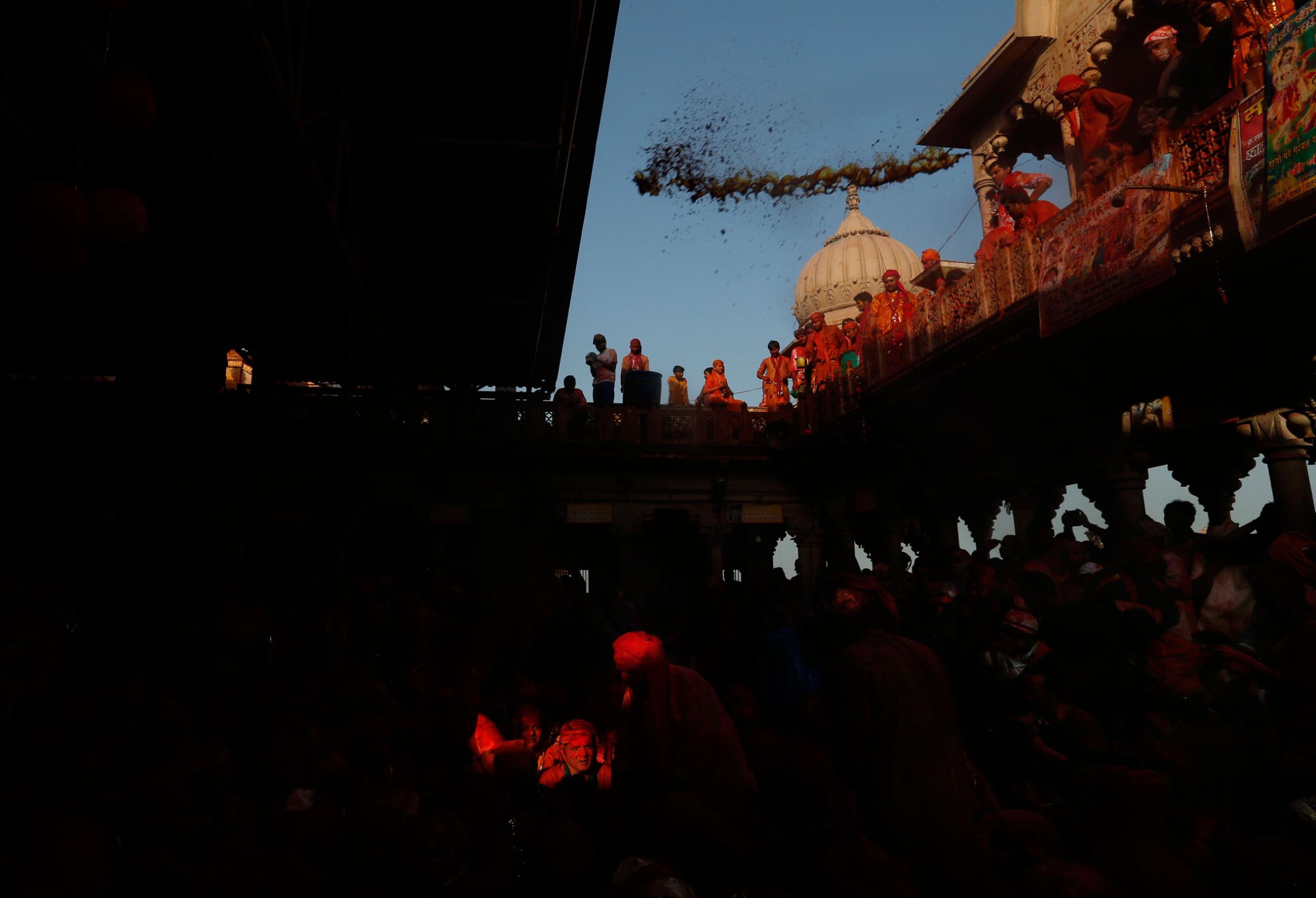

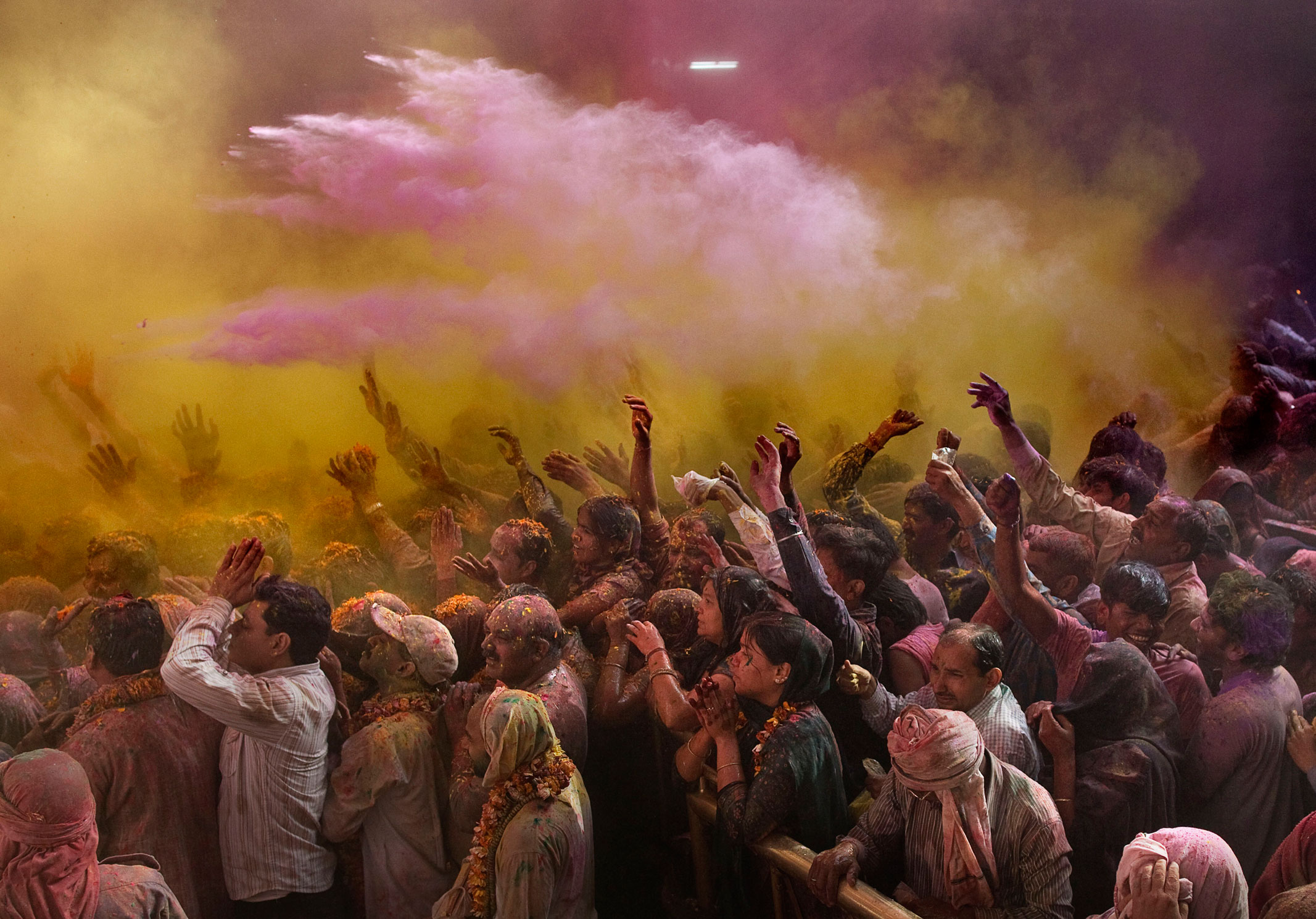
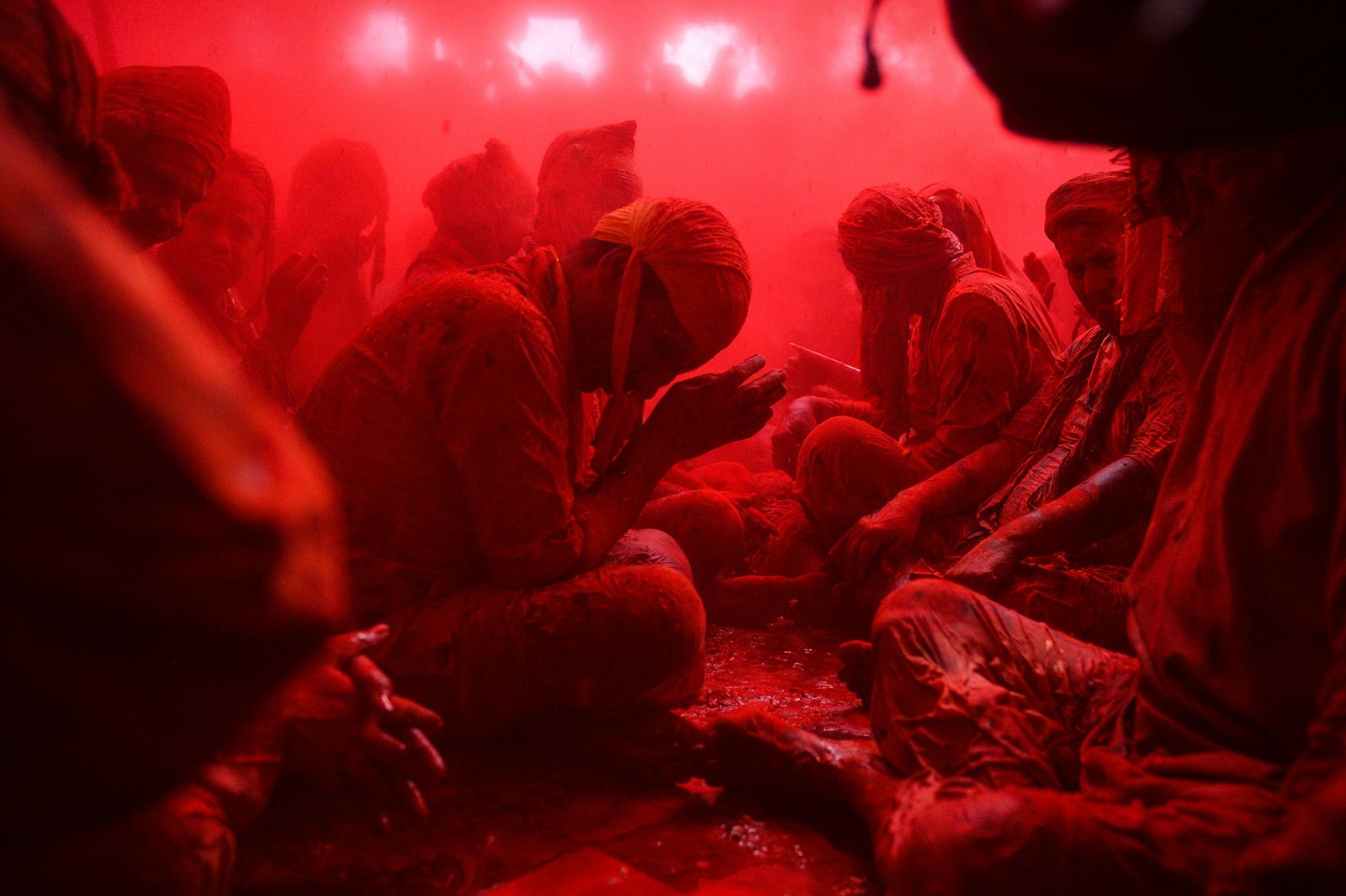
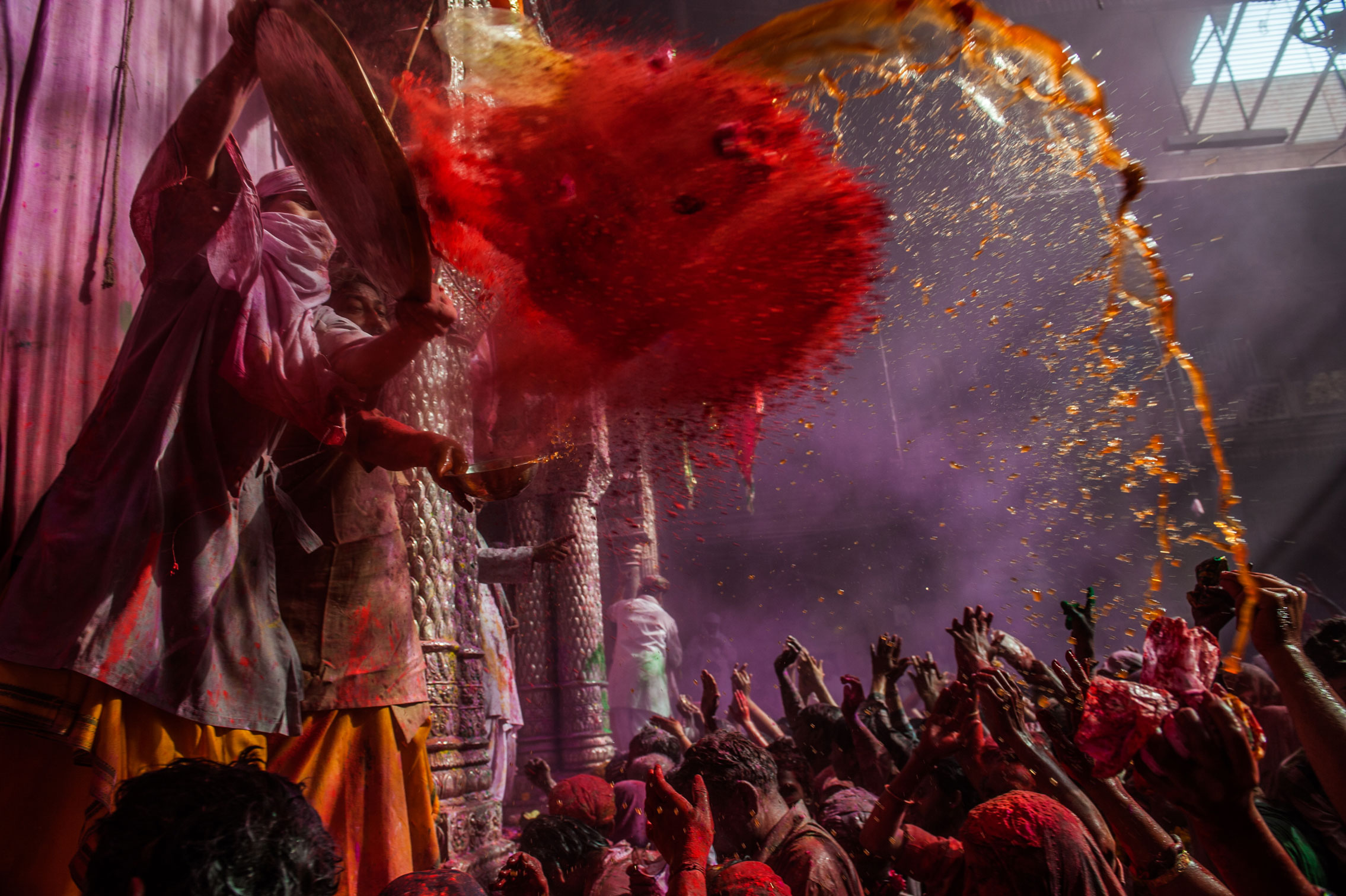


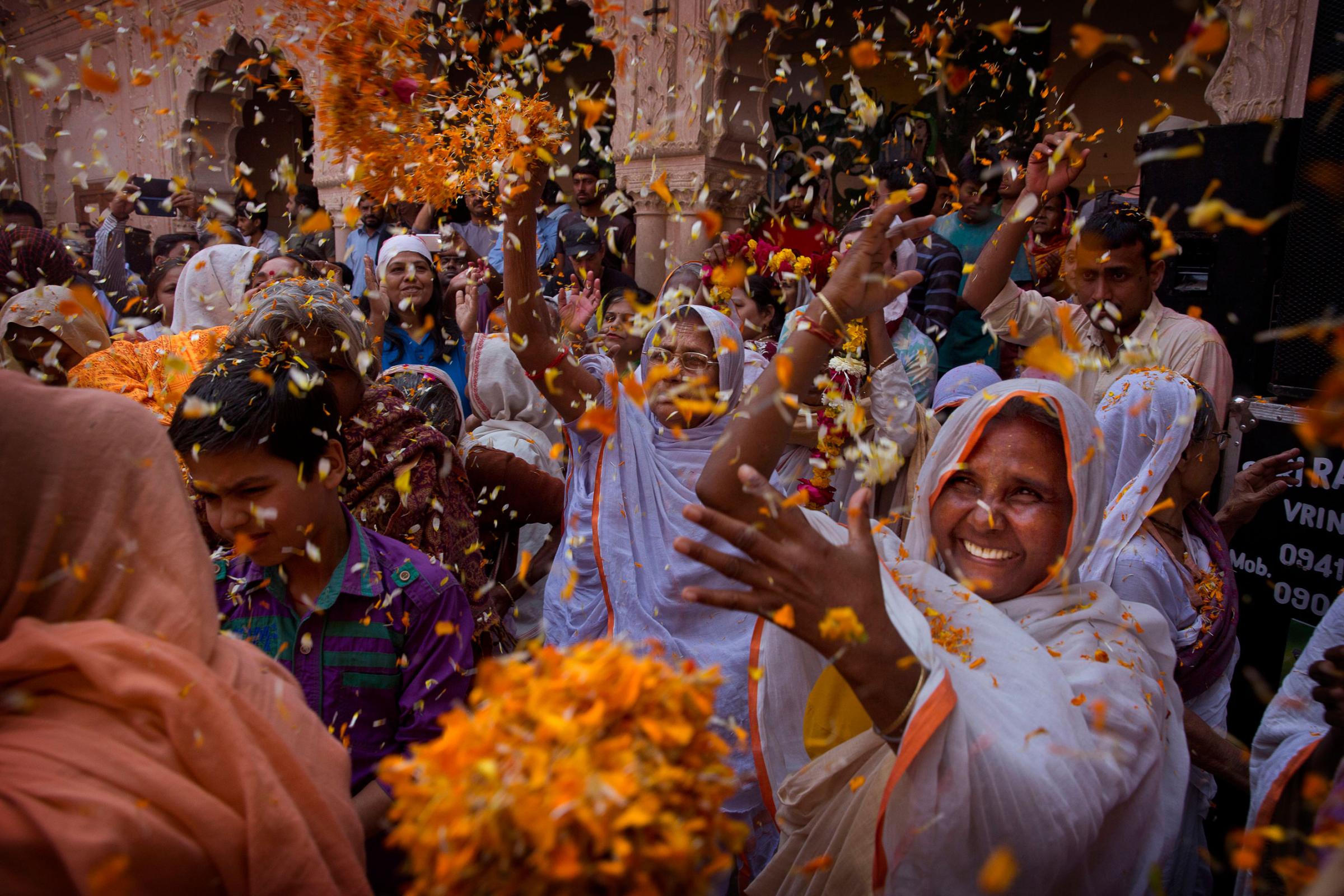


Here’s the short version: Enraged that his son Prahlad worshiped Lord Vishnu instead of the god he claimed to be, a powerful king named Hiranyakshyap conspired to have his wayward progeny killed by fire. The deal was that Prahlad would sit on the lap of the King’s sister, the demon Holika, who had a boon to protect her from flames — in some versions a magic sari. But when the pyre was lit, Prahlad recited the name of Vishnu and emerged unscathed. Holika, on the other hand, was eaten up by the flames.
There are cuter stories associated with Holi too, like that of Krishna and his beloved Radha. Krishna — whose skin was blue — loves Radha. But he’s embarrassed by his different skin color. On the advice of his mother, he smears his crush’s face with paint so they look alike. And it works: Krishna enchants the world, the saying goes, but Radha “enchants even Him.”
What actually goes down?
Although in some regions the festival is drawn out for longer, Holi is normally spread over two days — pretty short by Indian standards where some religious festivals, like the Kumbh Mela, last almost two months.
On the evening of the first day, Holika Dahan, wood and dung pyres are burned to symbolize the triumph of good over evil. The second day, known as Rangwali Holi, is the carnival of color. Millions take to the streets to throw fistfuls of colored powder and soak each other with water guns. Traditionally, people were doused with turmeric and flower extracts and smeared with sandalwood paste but these days synthetic powders and dyed water are common: locals recommend you moisturize beforehand so the powder is easy to remove. Leave your iPhone at home. Maybe don’t wear your best sari.
Holi is purportedly a time when people can celebrate together unbound by caste or ethnicity. It’s also traditionally an occasion for scoffing marijuana-infused goodies such as bhang lassi, a yogurt drink mixed with cannabis paste. The cultivation, sale, and purchase of cannabis is technically illegal in India, but various loopholes mean that consuming bhang, especially during Holi, is allowed. A more serious issue however is harassment during the festival. There have been numerous reports of men using the permissive atmosphere as a justification to sexually assault women over Holi.
More Must-Reads from TIME
- Donald Trump Is TIME's 2024 Person of the Year
- Why We Chose Trump as Person of the Year
- Is Intermittent Fasting Good or Bad for You?
- The 100 Must-Read Books of 2024
- The 20 Best Christmas TV Episodes
- Column: If Optimism Feels Ridiculous Now, Try Hope
- The Future of Climate Action Is Trade Policy
- Merle Bombardieri Is Helping People Make the Baby Decision
Write to Joseph Hincks at joseph.hincks@time.com